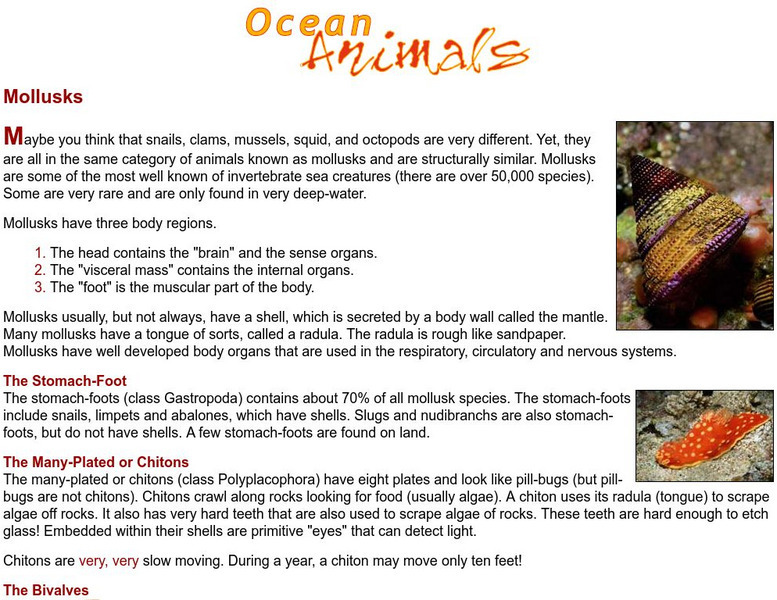Curated OER
Compound Species
Learners gather pictures of animals, fish, birds, and insects, and sort them by category: land, sea, and air creatures. They choose two of these categories and imaginatively combine part of animals (such as horns, tentacles, fins, floppy...
Curated OER
Phylum mollusca
This is an organized presentation that lists characteristics and features of their general body features. Mollusc is spelt with both a 'c' and a 'k' in various stages of this Powerpoint so an explanation by the teacher of Scientific...
Biology Junction
Cnidarians
In this cnidarian worksheet, learners study the biology of the different species of cnidarians and complete a series of questions.
Curated OER
Science: Animal Body Parts
Learners examine animal vocabulary words and identify which animals have those characteristics. In small groups, they play an animal card game involving more vocabulary words. Students continue to drill on terms by completing...
Curated OER
Science: Making Jellyfish
Students examine jellyfish anatomy and estimate the size of the parts on picture cards. They use various supplies, including coffee filters and ribbon to make scale models of jellyfish. Students label all the jelly fish parts and hang...
Other
The Biology of Jellyfish Stings
James Cook University provides information on jellyfish stings. It explains what makes jellyfish toxic and how the toxins enter the body.
Missouri Botanical Garden
Missouri Botanical Garden: Ocean Animals: Mollusks
The Missouri Botanical Garden describes the characteristics and natural history of mollusks in text and color photography.
Smithsonian Institution
National Museum of Natural History: Search the Giant Squid
This site explores, in detail, what is known about the Giant Squid, and current efforts to uncover the squid in its natural habitat.









